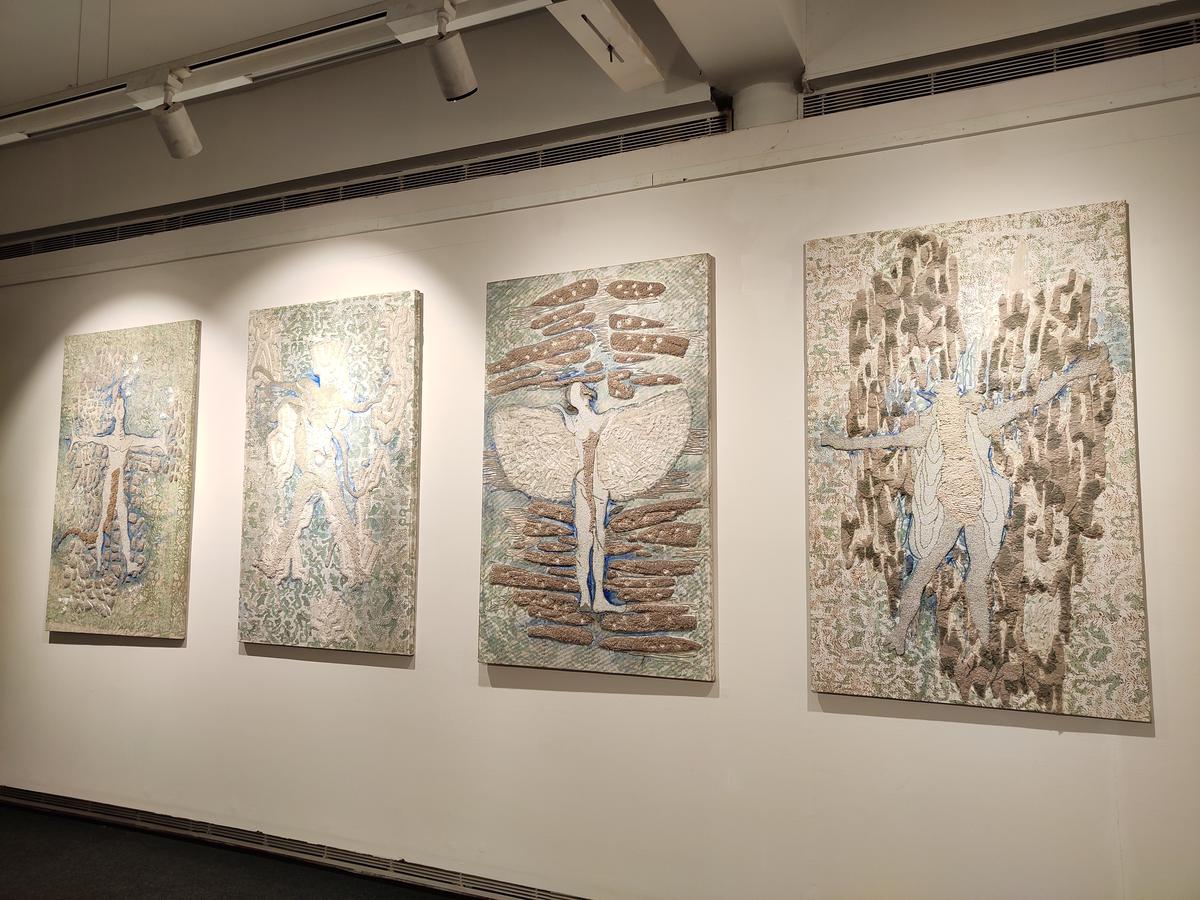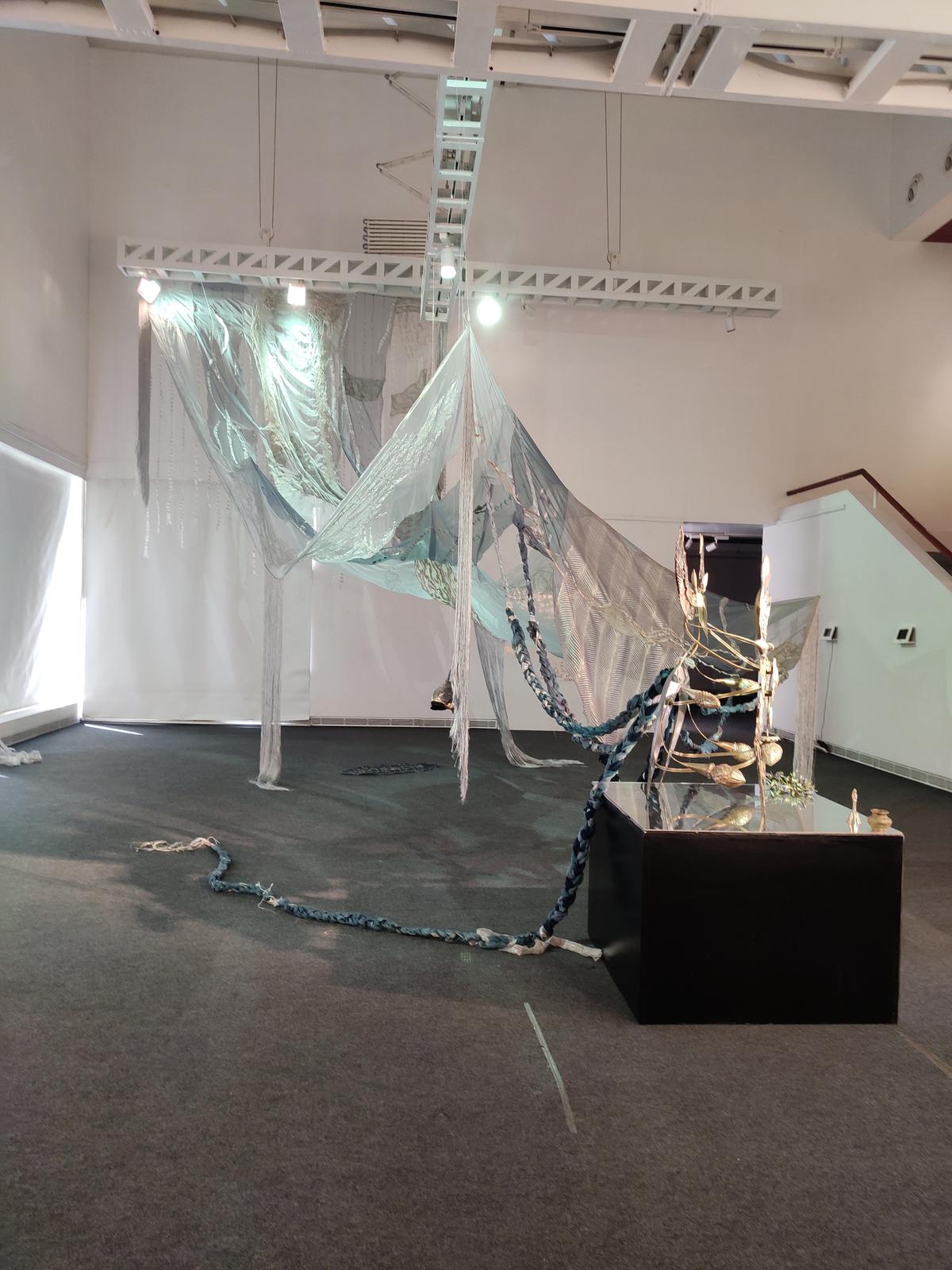Cultural connections in Jaipur
The Jaipur Literature Festival and its concurrent shows have marked a start to in-person cultural events in the country
The Jaipur Literature Festival and its concurrent shows have marked a start to in-person cultural events in the country
Jaipur in March is beautiful, but hot. But I wasn’t letting temperatures just shy of 40° Celsius keep me away from the first onground cultural event of the year, the 15th edition of the Jaipur Literature Festival (JLF). The crowds thronging Clarks Amer hotel, the new venue, to listen to fresh voices such as bureaucrat-author Daribha Lyndem, and literary giants like M Mukundan, seemed to have the same thought.
During the day, the strains of bagpipes (wielded by mustachioed men in Rajasthani regalia) accompanied visitors tricked out in headscarves, masks, light jackets and goggles, while the cooler evenings continued the traditions earlier observed at Diggi Palace — with performances by names such as Ujwal Nagar, the Hindustani classical maestro, Sufi singer Mooralala Marwada, Kashmiri singer-songwriter Ali Saffudin, Hindi rock band Ankur & the Ghalat Family, and the Kutle Khan Project.

Works by Puneet Kaushik
| Photo Credit: Georgina Maddox
Touch, feel, enjoy
What caught my eye, however, was how the crowds flowed easily between several concurrent cultural events in the city. The key one, besides JLF, was Vita Nova: A New Life, a two-part exhibition showcasing contemporary Italian and Indian art, showcased at both the Jawahar Kala Kendra and the Gyan Museum. Curated by Myna Mukherjee and David Quadrio (and hosted by the Italian Cultural Institute along with the festival organisers), it showcased the works of Andrea Anastasio, Francesco Samiti, Marta Roberti, Puneet Kaushik, Raghava KK and Shilo Shiv Suleman.
“Being married to a painter [Olivia Hamilton-Dalrymple] has meant that I am always interested in the visual arts. And unlike books, which can be read at home or over the internet, art does require a certain physical presence,” said historian, writer and co-founder of JLF William Dalrymple. The bestselling author’s latest book, Forgotten Masters: Indian Painting for the East India Company, also looks into art. “Now, more than ever, we must support it by going out and seeing it,” he added.

Shilo Shiv Suleman’s Reclaiming the River
| Photo Credit: Georgina Maddox
From the intimate to the grand
At Jawahar Kala Kendra, just 15 minutes away, the atmosphere was participatory, with visitors hanging out with the artists, and even sitting in small, safe groups to discuss their work. “We took Dante’s literature [ Divine Comedy] as inspiration for the two-site exhibition to explore the transformations, connections, and departures between the craft traditions and contemporary art of Italy and India,” said Mukherjee. The pandemic and its impact also synced with the medieval Italian poet’s epic work.
At Gyan, a more traffic-heavy half hour away, the artworks were more intimate and sensitive. Puneet Kaushik’s works drew you in with narratives on “identity, stereotypes, gender violence and sexuality”, while Shilo Shiv Suleman’s creations such as Reclaiming the River — an over 12-foot-long installation that explored the transformative power of rivers — and Grove, a bejewelled tree that lit up when visitors blew on it, were grand and evocative.
It is heartening to see the surge of events across the country, with exhibitions being planned for the next few months. The India Art Fair in Delhi, in late April, is a much-anticipated one. “Who knows what the months after that will bring. Covid-19 and the human condition has proven itself as unpredictable, but we must surge on,” says art historian Alka Pande, who was present at JLF.
Vita Nova is on till March 22.
For all the latest Entertainment News Click Here
For the latest news and updates, follow us on Google News.
